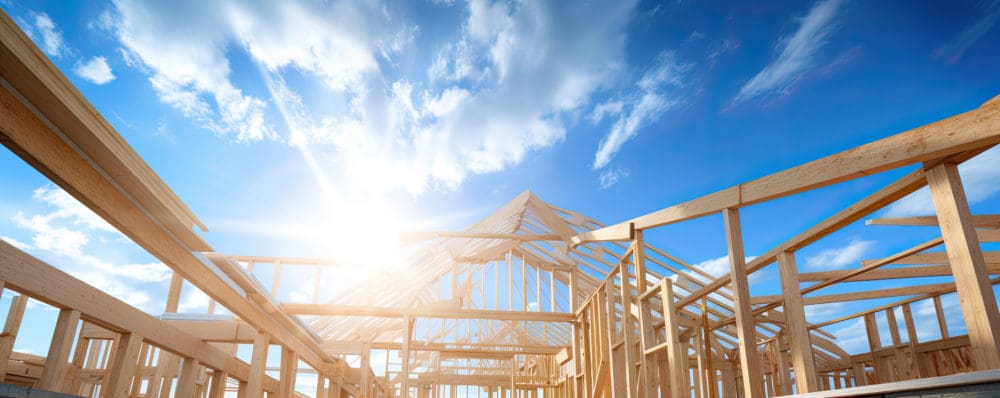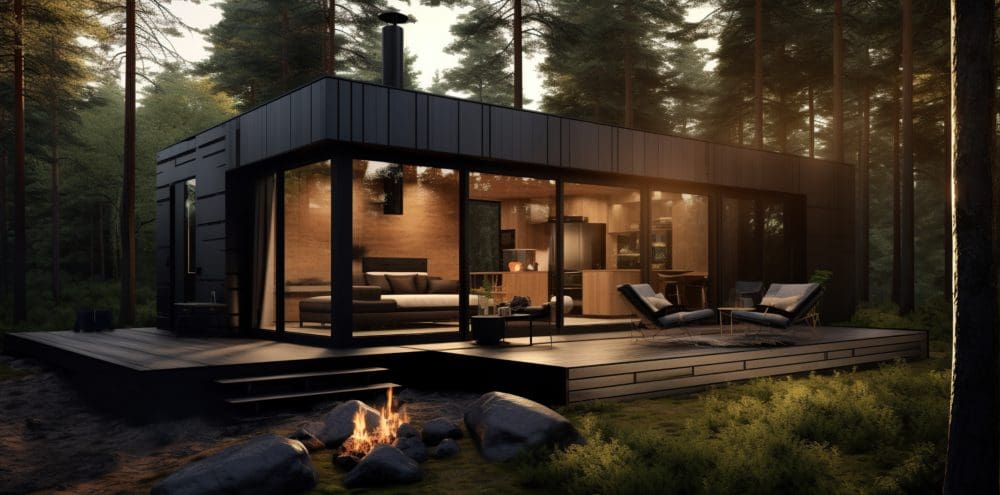The Market Simplified by Steve Schappert, The Connecticut Real Estate Broker. In this blog Schappert will explain Real Estate Inventory Levels in CT over the past 20 years. We will explore housing and population growth and try to hint at the future. Nobody has a crystal ball but history repeats itself and studying the past is the best way of predicting the future.
Single Family
Condominiums
Mobile Homes
In short, the housing inventory is much lower than usual and the laws of supply and demand dictate that a giant correction will be needed to change it. Don’t worry the bottom won’t be dropping out tomorrow and the sky isn’t falling. We do need to recognize that it isn’t a small problem and there isn’t anything on the visible horizon that will miraculously fix it. Good news for people that have bought and plan to stay put long term. Your value should continue to climb. The low inventory is like a comet, it’s hot, on track and will continue until acted upon by an opposing force such as a big uptick in construction. let’s take a look at what is going on.
The Vital Pulse of Connecticut Real Estate:
20 Years of Inventory Levels
Intro:
In the fast-paced world of real estate, market conditions can change rapidly, affecting both buyers and sellers. The availability of properties for sale, often referred to as inventory levels, plays a critical role in shaping the dynamics of the real estate market. In this blog post, we’ll delve into the importance of tracking and analyzing 20 years of inventory levels for home sale listings in Connecticut, specifically broken down by single-family homes, condominiums, and mobile homes.
Market Insights and Trends:
One of the primary benefits of analyzing long-term inventory data is gaining valuable insights into market trends. By examining how inventory levels fluctuate over two decades, we can identify patterns and seasonal variations that can help both buyers and sellers make informed decisions.
For example, trends in inventory levels can reveal whether the market is currently favoring buyers or sellers. When inventory is high, buyers typically have more options and potentially more negotiating power, while low inventory levels may indicate a seller’s market, where competition among buyers is fierce.
Predicting Market Cycles:
Understanding the ebb and flow of inventory levels can also assist in predicting market cycles. Historical data can help us spot when the market is likely to shift from a buyer’s market to a seller’s market or vice versa. This information is invaluable for real estate professionals, investors, and homeowners looking to time their transactions for the most favorable conditions.
Regional and Property-Type Variations:
Breaking down inventory levels by property type (single-family homes, condominiums, and mobile homes) can provide even more detailed insights. Different property types often follow distinct trends and cycles. For instance, while single-family homes may experience a steady supply and demand, the condominium market might have its own dynamics due to factors like homeowners’ association fees and amenities.
Additionally, analyzing regional variations can be vital for buyers and sellers. Inventory levels may differ significantly between urban and rural areas, impacting prices and market conditions. This data can help individuals make more informed decisions about where to buy or sell their homes.
Investment and Development Opportunities:
For real estate investors and developers, understanding long-term inventory trends can be a goldmine. It can help them identify areas with consistent demand for certain property types or regions where new developments are needed. By leveraging this information, they can make strategic investments that yield substantial returns.
Economic Indicators:
Inventory levels are not just important in isolation; they are also connected to the broader economic landscape. A thriving real estate market often indicates a robust local economy, with increasing job opportunities and economic growth. Conversely, a stagnant or declining market might signal economic challenges. Thus, tracking inventory levels can provide early indicators of the economic health of a region.
Conclusion:
The 20-year inventory data for home sale listings in Connecticut is a treasure trove of insights for various stakeholders in the real estate market. Whether you’re a homebuyer, seller, investor, developer, or simply an observer of economic trends, this data can provide valuable information to help you make informed decisions in a dynamic and evolving real estate landscape. So, keep an eye on these trends, and use them to your advantage in navigating the world of Connecticut real estate.
Connecticut’s Red-Hot Real Estate Market:
Predicting the Future Amid Plummeting Inventory Levels
The significant drop in inventory levels of homes for sale in Connecticut from 52,296 in January 2020 to 30,703 in September 2023 provides valuable insight into the dynamics of supply and demand in the real estate market. This insight can help us make informed predictions about the future of the real estate market in the state. Here’s how this information can be used to predict future trends:
- Strong Demand: A decrease in inventory levels often indicates strong demand for homes in the area. When there are fewer homes available for sale, it typically means that buyers are actively seeking properties. This can be attributed to various factors, including population growth, favorable economic conditions, and attractive living environments.
- Seller’s Market: A drop in inventory levels generally suggests that it’s a seller’s market. In a seller’s market, sellers typically have the upper hand, as there are more potential buyers than there are available properties. This can lead to higher selling prices and potentially multiple offers on properties.
- Price Appreciation: When supply is constrained by low inventory and demand remains high, it often results in price appreciation. Home values tend to increase because buyers are willing to pay more for the limited supply of available properties. This can be good news for current homeowners as their property values rise.
- Competitive Environment: A lower inventory often leads to a more competitive environment for buyers. They may need to act quickly and make strong offers to secure a property, which can result in bidding wars. This competitiveness can drive up prices and create a sense of urgency among buyers.
- Predicting the Future: Based on these observations, it’s reasonable to predict that the Connecticut real estate market may continue to favor sellers in the near future. If demand remains strong, inventory levels are likely to stay relatively low, leading to continued price appreciation and competition among buyers.
- Investment Considerations: Real estate investors can use this data to anticipate potential opportunities. They may consider investing in areas with decreasing inventory and strong demand, as these conditions often lead to good returns on investment.
- Economic Implications: The drop in inventory levels may also have broader economic implications. A thriving real estate market can be indicative of economic prosperity in a region, attracting businesses and supporting job growth.
It’s important to note that while these trends and predictions are based on historical data and current conditions, real estate markets are influenced by a multitude of factors, including economic conditions, interest rates, and government policies. Therefore, while declining inventory levels are a strong indicator of current market conditions, it’s essential to stay informed about a variety of economic and real estate market indicators to make more accurate and informed predictions about the future.
Insights to Population Growth “The Demand”
The past 50 years: Global population growth over the past fifty years has been significant. In 1970, the world’s population was approximately 3.7 billion, and by 2020, it had reached around 7.8 billion, more than doubling in five decades. This growth has been driven by factors such as improved healthcare, increased life expectancy, and declining mortality rates, although the growth rate has been slowing in some regions. Rapid population growth has had various implications, including increased demand for resources, urbanization, and the need for sustainable development to address the challenges associated with a larger global population.
The Next 50 Years: Predicting future population growth is a complex task influenced by various factors, including fertility rates, mortality rates, and migration patterns. However, based on current trends and projections, we can offer a general prediction:
It is expected that over the next 50 years, global population growth will continue, but at a gradually slowing rate. Some key factors in this prediction include:
- Declining Fertility Rates: Many regions are experiencing declining birth rates due to factors like increased access to contraception, changing social norms, and women’s participation in the workforce. This is likely to contribute to slower population growth.
- Aging Population: As life expectancy continues to rise, the global population is aging. While this may not directly impact overall population growth, it can influence population dynamics and healthcare needs.
- Regional Variations: Population growth rates vary by region. Some areas, especially in Africa and parts of Asia, are expected to continue experiencing more significant population growth, while others, like parts of Europe and Japan, are expected to see population declines.
- Migration: Migration patterns can impact population growth in different regions. Migration from less developed countries to more developed ones can influence population dynamics.
- Environmental and Economic Factors: Environmental challenges, such as resource scarcity and climate change, can affect population growth by influencing living conditions and economic opportunities.
While making specific numerical predictions is challenging, it’s safe to say that the global population is likely to continue growing, albeit at a slower pace than in the past. By 2070, the world’s population may reach 9 to 10 billion, according to some estimates. This growth will bring both opportunities and challenges, including the need for sustainable development, resource management, and policies to address the implications of a larger global population.
Will New Construction Fill The Gap
In 2007 Schappert predicted that the green building market will be the building market in 10 years! Schappert was correct and now predicts that the future will be filled with tiny green homes. Sustainability is essential to our growth as a planet.
50 Years of New Home Construction History:

New construction levels in the United States over the last 50 years have seen fluctuations influenced by various economic, demographic, and housing market factors. Here is a simplified overview of these trends:
- 1970s – Housing Boom and Stagnation: In the early 1970s, there was a housing boom, driven by factors such as the post-war baby boomer generation entering the housing market and favorable economic conditions. However, the mid-1970s experienced an economic downturn and stagnation in new home construction.
- 1980s – Recovery and Growth: The 1980s saw a recovery and a steady increase in new home construction levels. Economic stability, low mortgage interest rates, and changing demographics contributed to this growth.
- 1990s – Expansion Continues: New home construction continued to expand in the 1990s, driven by factors such as suburban development, low unemployment, and increasing homeownership rates.
- Early 2000s – Housing Bubble: The early 2000s marked a housing bubble, with a rapid surge in new construction driven by risky lending practices, speculation, and high demand for homes. This bubble eventually burst, leading to the housing market crash and the Great Recession in 2008.
- Late 2000s – Recession and Recovery: New home construction plummeted during the recession, and many construction projects came to a halt. It took several years for the housing market to recover.
- 2010s – Gradual Recovery: The 2010s witnessed a gradual recovery in new home construction. Low mortgage rates and increasing demand for housing, especially in urban areas, contributed to the resurgence.
- 2020s – Pandemic Impact: The COVID-19 pandemic initially disrupted construction activities in early 2020. However, lower interest rates and a shift in housing preferences, including a desire for more space due to remote work, drove strong demand for new homes in suburban and rural areas.
Overall, new home construction in the U.S. has experienced periods of boom and bust over the past five decades. Economic conditions, demographic shifts, and housing market trends have been significant drivers of these fluctuations. The housing market remains dynamic, and the pace of new construction is influenced by a range of factors, including interest rates, employment levels, and societal preferences. Understanding these historical trends helps provide context for the current state of the U.S. housing market and can inform predictions about future construction levels.
50 Years to Perfect Tiny Green Homes
The idea that the future will be filled with tiny green homes aligns with several emerging trends and societal shifts. Here are a few key reasons to support this prediction:
- Sustainable Living: As environmental concerns become increasingly prominent, there is a growing preference for sustainable and eco-friendly living. Tiny homes are inherently more environmentally friendly due to their smaller footprint. They require fewer resources to build, are more energy-efficient, and often incorporate renewable energy sources like solar panels. In the face of climate change, a shift toward tiny green homes is a natural response to reduce our ecological impact.
- Affordability: The high cost of traditional homeownership, particularly in urban areas, has led to a surge in interest in affordable housing options. Tiny homes are a cost-effective solution. They not only have a lower upfront price but also lower ongoing utility and maintenance costs. This affordability factor makes tiny homes an attractive option for a broad range of people, including first-time homebuyers and those seeking financial flexibility.
- Minimalism and Downsizing: Many individuals are embracing the minimalist lifestyle, choosing to prioritize experiences and quality of life over material possessions. Tiny homes inherently promote downsizing and simplifying one’s life, reducing clutter and focusing on what truly matters. This shift in lifestyle values makes tiny homes a natural fit for those seeking a more intentional and less materialistic way of living.
- Rural and Remote Living: The COVID-19 pandemic accelerated remote work and increased interest in rural and remote living. Tiny homes, especially those equipped with modern amenities, can offer comfortable living conditions in less urbanized areas. The appeal of living closer to nature and away from crowded cities is a significant factor in the growing interest in tiny green homes.
- Customization and Innovation: Tiny home design and construction have evolved significantly over the years. The creative use of space and innovative designs have made tiny homes more comfortable and functional. With the ability to customize layouts and features, homeowners can tailor their tiny green homes to meet their specific needs and sustainability goals.
- Community Living: Some tiny home communities and co-housing projects are emerging, emphasizing shared spaces and a sense of community. These communal living arrangements can further reduce environmental impact by sharing resources and infrastructure.
In summary, the vision of a future filled with tiny green homes aligns with a broader shift towards sustainability, affordability, and a desire for a simpler, more intentional way of life. While not everyone may adopt this lifestyle, it represents a growing trend and an attractive option for many who seek to reduce their ecological footprint while enjoying the benefits of a smaller, more sustainable home. Affordable and sustainable is the future of housing inventory…
Written by Steve Schappert. Steve Schappert has earned international recognition for his exceptional expertise in customer service, real estate, and construction over the past three decades. What sets Schappert apart is his remarkable talent for simplifying complex concepts, a skill that has endeared him to countless clients who deeply appreciate his ability to make the intricate world of real estate and construction accessible to everyone.


